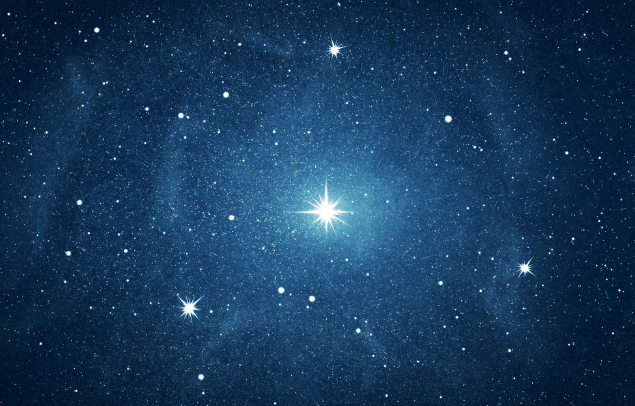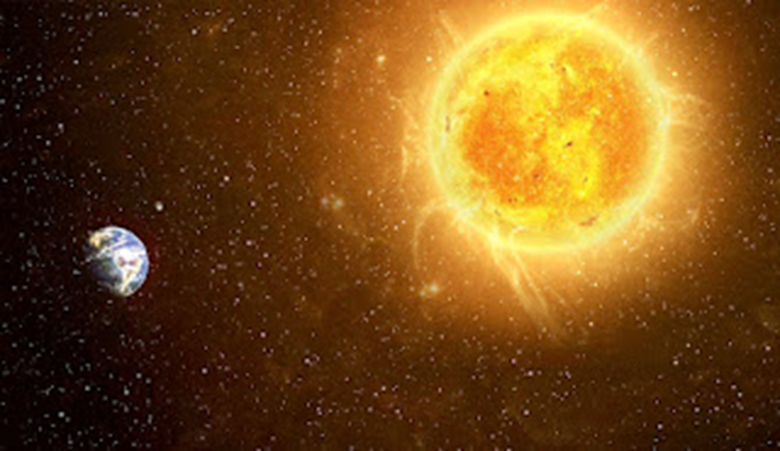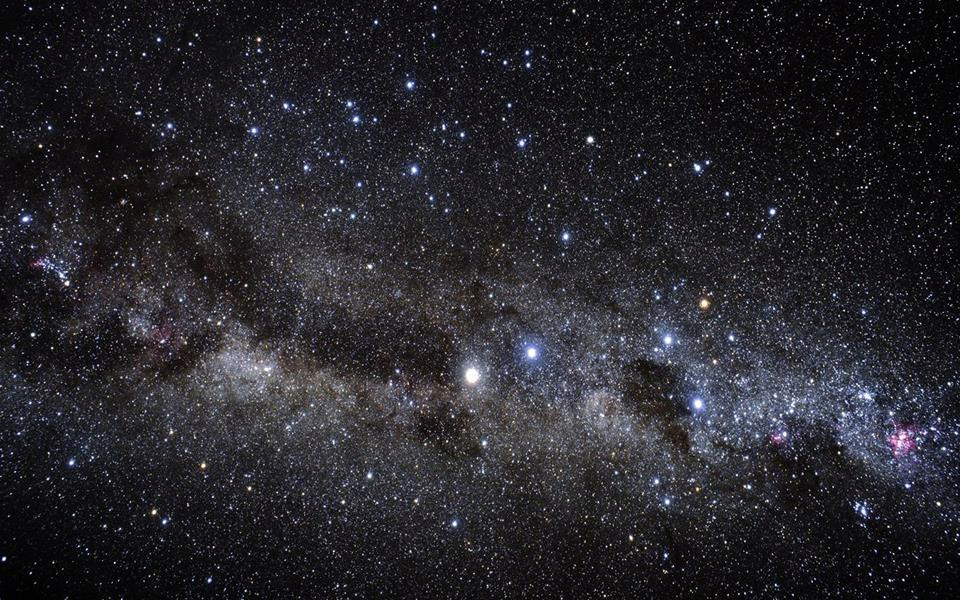?Why does space appear dark despite the presence of many stars brighter than the sun

If you're not a fan of light, living on the moon or in space is probably right for you! Regardless of the "oxygen" topic. The night sky looks very tempting around the clock! And that makes us wonder...
?Why does so much light shine on Earth, but almost none once you leave the planet, despite the many giant stars brighter than the Sun
?Why does space appear dark despite the presence of stars
We may think that the light of the day and the darkness of the night are a result of the rotation of the earth on its axis, and that the sun always illuminates the opposite half of the globe. That's part of the reason, but it's more complicated than that. That is, the sun also shines on the moon, but despite this, its sky is always black!
In fact, it's all thanks to the Earth's unique atmosphere. It is full of dust, dirt, gases and water droplets, all of which act like little mirrors reflecting the sunlight. When sunlight hits these tiny particles, they scatter and create different colours.
This is why we see the sky blue and all those amazing shades during sunrise and sunset. But it's a completely different story if you're on the moon. Where there is no atmosphere and the components of the medium differ there, in addition to the blackness of the ocean. You will also have the ability to see the stars even when the sun is shining on the surface during the lunar day.
The same goes for space. It is filled with lots of different gases, and with no envelope containing particles that reflect light (space is empty). This is why we find that even when the sun is shining, space looks like a black void. So if one day the Earth's atmosphere disappears , it will be as dark as it is in space or right on the Moon.
But the sun is not the only source of light in the universe. permission ... ? Why don't other stars shine brightly in the night? We're not the first to wonder about that. An astronomer named Thomas Digges researched this question in the 16th century. Digges was sure that the universe had no end, and the stars in it could not be counted.
So he tried to answer why so many stars, but they do not blind us with their bright light... but in reality he failed. His questions were so far removed from his time that he did not have the tools to find the answer.
?With stars brighter than the Sun, why isn't the Earth lit up at night
In the early 19th century, German astronomer Wilhelm Olbers proposed that the reason Earth's night sky is dark is because of a veil of dust that hides most of the stars from us. Later, this idea was also proven wrong.
?The stars give off not just light but the tremendous energy with which dust particles can heat up until they begin to shine. In this case, the night sky should have been bright because of this bright dust. Yet we see the sky darken every evening after sunset. What's bad about this theory then
Digges, Olbers, and other astronomers of the past thought the universe was infinite, but modern astronomy knows better how many stars there are. And as infinite as it may seem, it is simply not enough to illuminate our night sky. The sky gets dark because the stars, like the universe itself, don't last forever. They're finite.
And as we can see, the universe has its own limitations and is not as old as scientists thought. Of course, a mere 14 billion years is nothing compared to our existence, of course. Konya is still surprisingly young.

It is not enough for all the light from the most distant stars to reach Earth. In other words, thanks to today's powerful and enormous telescopes, we now know that it takes billions of years to reach us from the most distant stars.
This means that when we look at the sky, we are looking at a very distant past. Where modern telescopes can show us that light began its journey to Earth about hundreds of millions or billions of years ago. The more powerful the telescopes, the more we can see time.
One day we will be able to see something that was there before the stars appeared, perhaps by studying the dark gaps between them. The stars don't light up the night sky so much because they are really getting old even when we look at them, unimaginably far away.
?The light you see for a star now is actually emanating from it a long time ago. If that's the case, then... why don't distant stars shine as bright as the sun
!There must be thousands of stars much closer than there are on the outskirts of the universe. Yes, there sure are a lot! Let's look at our nearest neighbor in space, Proxima Centauri, as an example. It's practically in our backyard just over 4 light years away from us. But we can't even see it in the sky without a telescope
The problem is that it is seven times smaller than our sun, and gives only a fraction of 1% of the sun's brightness. And of course our "near" neighbor which is only 4 light years down the road is still very far away at about 25 trillion miles.
Distance and gases may limit the access of rays
?By comparison , our big, bright Sun is "a mere" 93 million miles from Earth. So, our star is much bigger and closer. Other stars may be brighter than the Sun, but they are also much farther away from us. But don't all those distant stars provide us with at least some noticeable light on this planet
To put it more approximate, we will put it this way : It would be like turning on a lot of tiny grandfather lamps in a room. Of course, it is not as bright as a single large LED bulb. But she gives part of her light. So it gives us a little bit of something , but it's barely noticeable.
Remember, space may be empty compared to Earth's atmosphere, but there is a lot of gas out there. They move, form clouds, and act as a kind of veil that hides most of the light in the Milky Way. That is why we cannot see everything that is happening in our galaxy, we need special equipment for this.
But it turns out Olbers was kind of right, only the curtain covering the light is made of gas, not dust! That's where the Big Bang comes into play.
The theory states that the universe was born in the Big Bang 13.8 billion years ago. Since that time, everything has been moving away from the point where it all began. That is, the universe is expanding, and the objects inside it are moving away from each other over time.
Light sources also spread out, which means that space is getting darker, and the number of black areas is increasing. They've been moving at their own speed for billions of years, and our telescopes and satellites, no matter how fancy, can't keep up.

?So how do we know these dark areas exist if astronomers can't see them
To keep it simple so we don't have to stretch it out, scientists study how visual objects behave. and how celestial bodies move along an elliptical orbit around the stars or if they have gravitational pull or other influences on them. This can only be explained by the presence of an unknown space object or a host of other unknowns.
! Astronomers believe that most of the matter in the universe is invisible ( matter and dark energy, 95% of the universe is unknown to us ), and appears like a black void to the human eye. But what does it look like through a telescope? Some of that black glows with an amazing rainbow of colours
We cannot see it because our vision is limited to the visible spectrum of light. But if you remember the electromagnetic spectrum from back in school, you'll know that visible light is just a tiny sliver of all those wavelengths and frequencies. There are radio, microwaves, infrared, ultraviolet, x-rays, and gamma rays.
!They are all outside the visible spectrum, but they are all in space and can be recorded by modern telescopes. And what they show us is nebulae (for those who do not know much about them, see the article on the definition of nebulae and their types ) dark or invisible, lit up in every color you can imagine
!Red, blue, purple, yellow and orange, the entire color wheel depends on the gases that make it up! And who knows, maybe one day we will have special glasses that allow us to see all the colors of space just by looking at the night sky
In the end, the more we delve deeper into the mysteries of this world, the more we realize our limitations and understand the difficulty of living in worlds other than our own. Many obstacles will follow us that are impossible to address at the present time.
But if we want to achieve our dream one day and move to life in space. We must think first, and after oxygen, of course. In an atmosphere that guarantees us one of the basic requirements of life.
Source : websites

